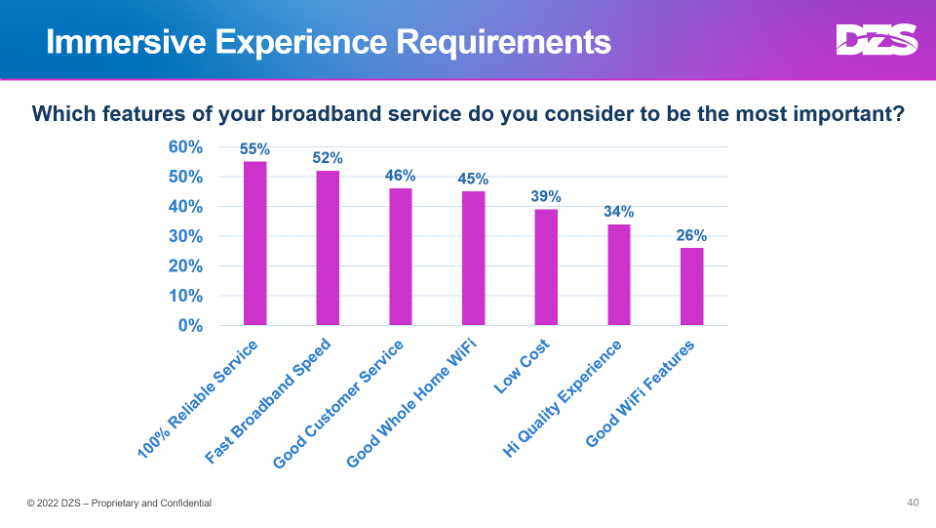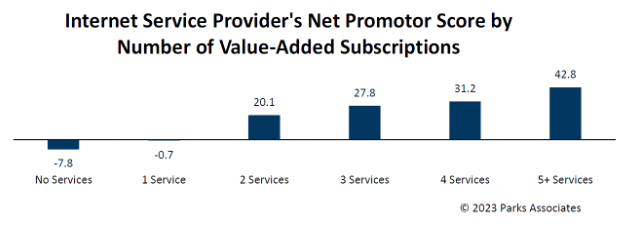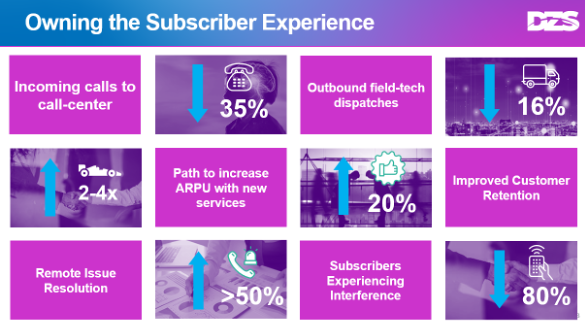Legendary Apple founder and tech innovator Steve Jobs when asked “How do you make a successful product?” responded, “You’ve got to start with the customer experience and work backward to the technology.” There is no doubt that speakers and vendors at Fiber Connect 2023 spent a lot of time and energy focused on upgrades to next generation technologies like 10 gigabit (G) Passive Optical Networking (PON) and emerging government stimulus programs like the $42.5 billion Broadband Equity Access and Deployment (BEAD) initiative. However, if history has proven anything to us in the communications industry, it is that the best technologies don’t always win, and that government stimulus programs are a great catalyst for expansion, but they are not business strategies in-and-of themselves.
Let’s explore both of these concepts with Steve Job’s guidance in mind…
Three Keys to Building Successful Networks
Having worked with service providers and their business models now for more than two decades, the successful business model for building networks is disproportionately influenced by three key variables:
1. Take Rate:
In order to achieve the best return on your network investment, you need to achieve the highest possible service take rate. Of course, the speed and capacity of the technology that you are deploying is very important to achieving a good take rate, but it is far from the only important variable. Will a multi-gigabit service enabled by 10G PON convince the majority of your market to buy into the upgrade? It could certainly catch the attention of your subscribers, but speed alone isn’t going to get them to take the service. It needs to speak more broadly to the needs of consumers. Below is a recent analysis by Omdia where they asked subscribers which broadband service features were most important to them.

Indeed, speed is important, but not as important as reliability, and nearly as important as good customer service and home WiFi. In order to drive an optimal service take rake, service providers need to think beyond just what technology will provide them the most speed, and think about other factors related to middle-mile capacity, experience management and assurance software, and WiFi technology.
2. Churn:
This variable is often overlooked by many service providers, but critical to long-term success. The initial subscriber capture in terms of marketing, installation, provisioning and equipment can take anywhere from six months to almost two years to recoup depending on the sophistication of the service and the competitiveness of the environment. If the service provider cannot retain that customer for more than that time period (meaning that they “churn”) then they are losing money and will likely need to spend many times more to recapture that potential subscriber in the future. Churn, again, is based on subscriber experience and directly related to the survey above. Yes, speed in important, but it is what you do with it that makes a service “sticky”.
3. Incremental Services:
The last key items that drive long-term success are the incremental, revenue generating services that you can add on to the subscriber relationship. This can take many forms, from upselling subscriber service levels to adding new services like bandwidth on demand or network security to adding complementary services like upgraded WiFi or in-home extenders to selling advertising data to third-parties. Over a nearly unlimited waveguide like fiber, each of these opportunities has the potential to fall almost directly to the bottom line, shortening the time to break even and accelerating return on investment (ROI). New technologies can often raise the floor of the potential incremental services that can be added, but identifying the subscribers to market those services to and simplifying its turn-up is often again highly reliant on software.
Service providers who understand and execute against these variables are best positioned for long-term sustainable success.
Happy Customers Equal Bigger Profits
Getting to the second point we needed to explore above … Yes, government subsidies can help to lower the initial threshold for ROI, but once the network is in place it will be the ability to attain a critical mass of subscriber that covers the network’s ongoing operational costs, retain those customers and sell new incremental services into that same base that will determine the service provider’s destiny. Looked at another way, happy customers increase Net Promoters Scores (NPS). In fact, in a study done by Parks Associates that supports higher speeds leading to happier customers, NPS show a direct correlation to Downlink Speed.

However, there is an even higher correlation between NPS and the number of incremental services that service providers were able to sell to enhance their experiences.

So how does this relate to long-term success? A recent study by Bain & Company shows that increasing subscriber retention rates by just 5% can increase profits by 25%-95%. This is further reinforced by another correlated point from the same study, that the success rate of selling to a subscriber you already have is 60%-70% vs, selling to a new of 5-20% – an increase in success of anywhere from three to 14 times.
DZS: Setting Customers Up for Sustained Success
The halls of Fiber Connect 2023 weren’t completely filled with talk of faster technologies and government subsidies. Comprehensive solutions vendors like DZS took the opportunity to demonstrate how AI-driven software solutions like CloudCheck WiFi experience management, Expresse network and service assurance and Xtreme automation and orchestration complement the DZS Velocity last mile, Saber middle mile and Helix in-home portfolio as well as other vendors’ solutions to create an environment for sustained success. In fact, with over 70 million subscribers worldwide, DZS is the industry leader in enabling service providers to continue to enhance their subscriber experience with each generation of technology and emergence of new applications. The impact of focusing on the subscriber experience for DZS service provider customers have been clear as illustrated by the below results:

The net result: A foundation for long-term sustained success. We encourage you to learn more about the competitive advantages that DZS can build for its customers by reading this white paper: Gain Your Competitive EDGE.
We believe that Fiber Connect 2023 will be seen as a touchstone in our industry for years to come as the event that marked accelerated change as it ushered in the multi-gigabit era, the AI-driven experience era, and the acceleration of initiatives that ultimately led to the bridging of the digital divide. That said, for a subset of service providers that were able to harness the confluence of these three dynamics, it will mark the moment that they began to extend their competitive edge and become the long-term winners in the market. We believe DZS solutions are optimally suited to establish this edge, and encourage you to contact us or explore our full portfolio to see how it can help you!



 '
'